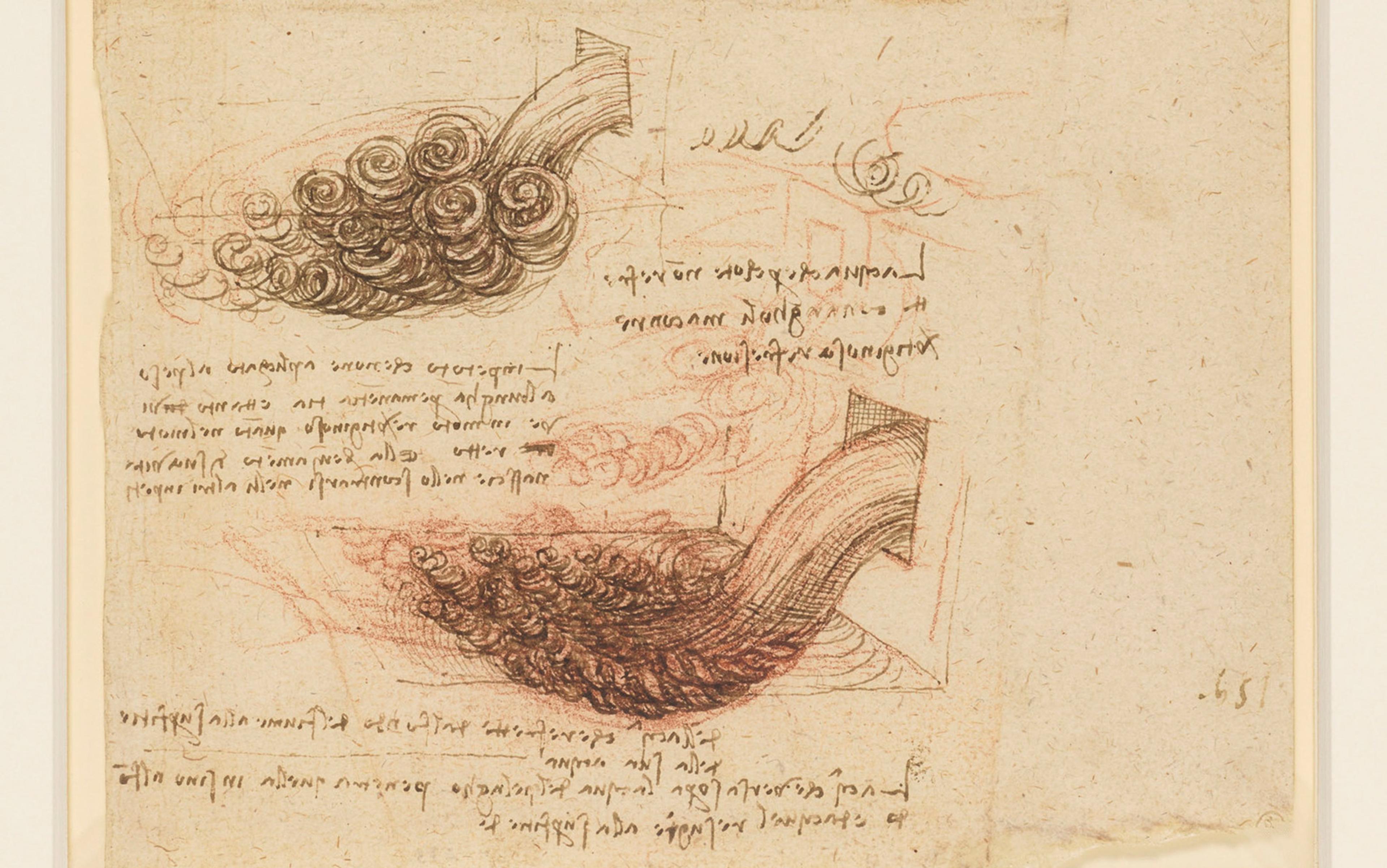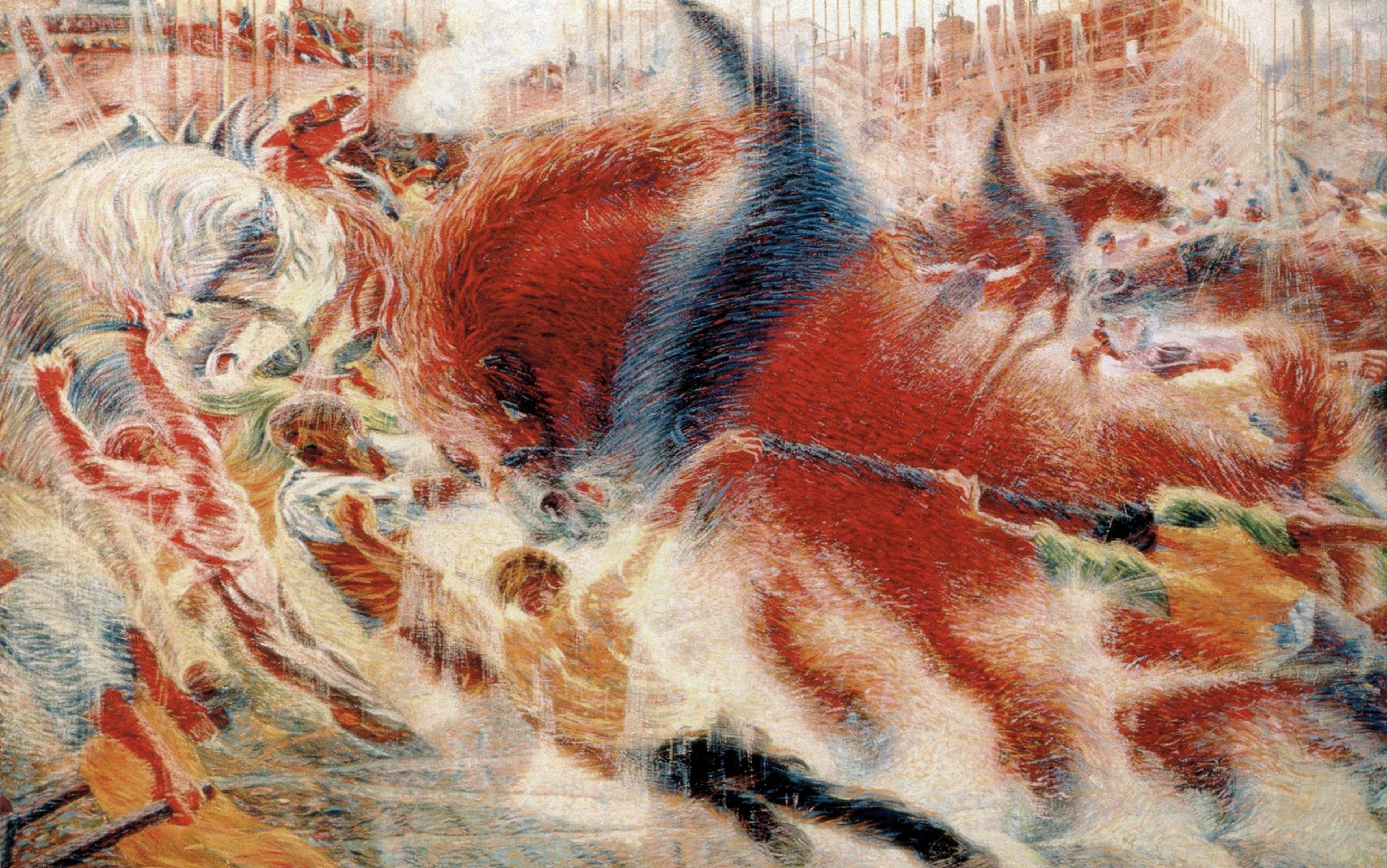According to thermodynamics, any living organism is constantly exchanging a flux of matter and energy with its environment. As such, the system is in non-equilibrium. In his book What Is Life? (1944), the Austrian physicist and Nobel Laureate Erwin Schrödinger proposed that sustaining life is exactly predicated on avoiding equilibrium: ‘How does the living organism avoid decay? … By eating, drinking, breathing and … assimilating. The technical term is metabolism.’ According to this view, the ultimate equilibrium is death, and thus survival depends on staying as far as possible from equilibrium.
Schrödinger was foremost a physicist, primarily known for his work in quantum physics, where many will know his thought experiment concerning ‘Schrödinger’s cat’ which, paradoxically, may be considered simultaneously both alive and dead. This arose from discussions with Albert Einstein in 1935 about the problems of the Copenhagen Interpretation of quantum mechanics.
Later in life, however, Schrödinger turned to the big and important questions of discovering the essential forces of life and understanding how the field of thermodynamics could help. In those days, the scientific study of the human brain was still in its infancy, and as such not part of Schrödinger’s focus. But since then, neuroscience has made great strides. It has become abundantly clear the brain must be the main driver of how organisms can avoid equilibrium and death. In fact, very recent discoveries have started to cast new light on how brains may even thrive on non-equilibrium; and how turbulent, non-linear brain dynamics help find order in largely disordered environments so as to enhance the chances of survival.
Over the past few decades, brain scientists have focused on how the brain seems to be primarily driven by momentary stimulation from the environment when we engage in specific tasks. Yet, as shown by pioneering research by the American neurologist Marcus Raichle, it has become increasingly clear that the brain is not solely extrinsically driven by information coming from the environment. Instead, the brain is mostly shaped by intrinsic resting-state activity, switching between brain states while interpreting, responding to, and even predicting environmental demands.
This view is supported by the fact that the metabolic energy consumption maintaining the intrinsic resting-brain activity is much larger than that used by extrinsic task-driven demands, such as when watching visual stimuli or solving cognitive tasks. Given that, by some estimates, more than 20 per cent of the total energy consumption is taken up by the brain, which only represents 2 per cent of body weight, Raichle has poetically spoken of the brain’s ‘dark energy’.
Here we propose to fuse the ideas of Schrödinger and Raichle to suggest the idea that the flow of energy between the brain and the environment is driving the non-equilibrium needed to sustain life. This leads to a novel theory of the thermodynamics of mind, a theory that draws on ideas from physics and allows researchers to quantify and characterise the brain processing leading to non-equilibrium with a great degree of precision.
According to the second law of thermodynamics, proposed by Rudolf Clausius and Sadi Carnot in the 19th century, over time a system tends to go from order to disorder. In the language of thermodynamics, this increase in the level of disorder can be expressed as ‘entropy’. As such, the law states that, when entropy production is larger than zero, this corresponds to a system that is in non-equilibrium and irreversible in time. This is true for all living systems. In contrast, if there is no entropy production in the system, this is a system in equilibrium and reversible in time. This establishes a firm link between entropy production, non-equilibrium and irreversibility, expressed as ‘the arrow of time’ by the English physicist Arthur Eddington in 1927.
An excellent example of a non-equilibrium system with associated entropy and the arrow of time occurs when watching footage of a glass being shattered. The entropy increases as the system goes from order to disorder, and the causal sequences of events, and thus the arrow of time, are very clear. In contrast, when watching the same film sequence in reverse, we immediately recognise that it is not possible for the glass to come back together, going from disorder to order. The impossibility of the events is abundantly clear, and the arrow of time must be reversed.
Intriguingly, in his most recent film Tenet (2020 ), the director Christopher Nolan combines such visual segments, which are running both forwards and backwards in time. This initially creates confusion, but we quickly learn to discern between the different visual elements – such as cars on a motorway strangely flipping back from destruction – and to immediately recognise such violations of the expected forwards arrow of time.
Changes in equilibrium in the diseased brain could be characterised before any overt symptoms start
The beauty of thermodynamics is that the arrow of time can be elegantly mathematically described in terms of entropy production, which increases when a system goes from order to disorder, such as when a glass shatters. The total entropy production can be computed and, if this is larger than zero, a system is said to be non-reversible and in non-equilibrium. In other words, a glass being shattered is a clear example of non-equilibrium and a non-reversible system (except in the fictional real-world-physics-defying world of Tenet).
In contrast, as an example of a system in equilibrium, imagine watching footage of colliding billiard balls. When watching this film both forwards and backwards, you would be hard pressed to distinguish the arrow of time for each film. In thermodynamical terms, this is because the process is not producing entropy and creates an intrinsically reversible process.
These thermodynamic concepts are powerful tools that could in principle be applied to anything. We and other researchers have therefore started applying them to brain signals. This allows us to measure how the environment is driving the brain by simply measuring the level of non-reversibility in brain signals. In ongoing research, we are studying how these tools can capture the arrow of time and entropy production in the brain, allowing for a precise assessment of how both the external world and our body drives the brain to non-equilibrium in different situations. Potentially, this could even be used to characterise changes in equilibrium in the diseased brain before any overt symptoms have started showing.
Recently, we have combined thermodynamics with the power of a machine learning technique called deep learning to characterise the arrow of time in brain signals. The deep learning approach has been very successful in creating useful tools such as automatic machine translation from one language to another. The key idea is for the deep learning algorithm to learn patterns in large datasets and then generalise this learning to new cases. As an example, take language learning, where deep learning would be fed with a text in two or more languages and then learn to generalise when a word occurs in a certain context. This allows the algorithm to generate machine translations that are much better than previous technology, as can be seen when using, for instance, Google Translate.
We used deep learning as a tool for learning to distinguish between forwards and backwards versions of brain signals. Initially, in the learning phase, each brain signal is labelled with either the forwards or the artificially generated backwards version, and the deep learning algorithm learns to distinguish between them with high accuracy. In the test phase, new brain signals are fed to this deep learning algorithm and classified according to the rules.
As a homage to Nolan, we called this algorithm TENET (Temporal Evolution NET). The beauty of this algorithm is that the level of accuracy of using TENET on brain signals directly provides the level of irreversibility and non-equilibrium for a given brain state. In this way, we can assess the level by which the environment is driving the human brain under different condition, whether resting or performing tasks.
We might lessen the risk of the brain becoming closer to equilibrium and therefore less able to engage in the world
Our results confirmed that, in general, the brain is being driven by the environment and, importantly, the human brain is closer to non-equilibrium and more irreversible when performing different tasks than when resting. In contrast, when using TENET to characterise the resting-state brain activity in neuropsychiatric patients with bipolar disorders, ADHD and schizophrenia, we found that the brains of these patients are closer to equilibrium than those of healthy participants. This shows that the brains of neuropsychiatric patients are more isolated from the environment and more likely to be intrinsically driven. This fits with how, for example, rumination in depressed patients can lead to the malignant isolation from the external world that can drive depression.
Overall, using thermodynamic methods to characterise brain activity could potentially be highly useful in providing novel biomarkers that can help identify those at risk of disease much in advance of the first serious symptoms occurring. In fact, taking a step further to build whole-brain models of brain activity in disease might help identify strategies for interventions that could lessen the risk of the brain becoming closer to equilibrium and therefore less able to engage in the world.
These findings are promising but there are still challenges to overcome. One of the main criticisms of deep learning has centred on the largely ‘black box’ nature of advances, which may have had considerable practical utility for solving complex problems but have produced little in the way of new insight into how this is achieved mechanistically. This black box criticism does not apply to our use of deep learning for learning the arrow of time in brain signals, since we used it merely as a highly efficient tool for discovering the level of the reversibility in brain signals. In fact, we have since used other, unrelated techniques for estimating the entropy production and reversibility of brain signals, which have helped us gain a deeper understanding of the thermodynamics of mind.
Complementing these thermodynamics findings, and in order to really understand the non-linear generation of non-equilibrium brain states, we have also used the principles of turbulence. This research has allowed us to move beyond merely establishing the arrow of time in non-equilibrium systems.
Turbulence is something most people primarily associate with whirlpools of water or with often frightening experiences aboard airplanes. But turbulence is first and foremost a fundamental and highly useful principle in nature that provides optimal mixing properties, allowing for the efficient transfer of energy/information over space and time. In fact, research over the past century has shown that turbulence is the optimal way of cascading energy across spacetime over many scales, which is a fundamental organising principle of physical systems. On a very practical level, this has been shown to have many important and relevant applications: from turbulent stirring while cooking that helps mix ingredients, to finding more energy-efficient ways of improving chemical plants, airplanes and windmills.
Historically, turbulence was coined in 1508-14 by Leonardo da Vinci who was faced with one of his most difficult challenges when trying to capture the underlying order in the seemingly random movements of water creating whirlpools. Nevertheless, he did not shy away from trying to understand and depict the underlying generating principles of such crowded dynamics. He came up with the phrase turbolenza in vernacular Italian, derived from turba, the Latin word for ‘crowds’. This characterisation of eddies at varied scales remarkably predates the seminal observations by the English polymath Lewis Fry Richardson (1881-1953), the pioneer of mathematical weather forecasting, who described the important turbulent energy cascade principle.

A Deluge (c1517-18), by Leonardo da Vinci. During the last years of his life, Leonardo repeatedly treated the subject of a cataclysmic storm overwhelming a landscape, in both his drawings and his writings. All images ©The Royal Collection Trust/Her Majesty Queen Elizabeth II 2022

©The Royal Collection Trust/Her Majesty Queen Elizabeth II 2022

©The Royal Collection Trust/Her Majesty Queen Elizabeth II 2022

©The Royal Collection Trust/Her Majesty Queen Elizabeth II 2022

©The Royal Collection Trust/Her Majesty Queen Elizabeth II 2022

©The Royal Collection Trust/Her Majesty Queen Elizabeth II 2022
Richardson built on Leonardo’s observation that there are differently sized vortices or eddies in a fluid, where each eddy corresponds to a rotational movement. The interactions between large and smaller eddies interchange energy, in the form of velocity or kinetic energy; this is called the energy cascade, and it transfers energy across scales, which roughly correspond to the size of different eddies. This energy cascade was described in a humorous verse by Richardson: ‘Big whirls have little whirls that feed on their velocity, and little whirls have lesser whirls and so on to viscosity …’, a play on Siphonaptera, the taxonomic order of fleas, used in a brief poem by the English mathematician Augustus De Morgan: ‘Great fleas have little fleas upon their backs to bite ’em, / And little fleas have lesser fleas, and so ad infinitum’ – itself a paraphrase of a line from a poem by Jonathan Swift.
The brain employs turbulence in its quest to stay far from equilibrium in order to survive
These poetic observations were formalised by the Russian mathematician Andrey Kolmogorov (1903-87) in his groundbreaking phenomenological theory of turbulence. This highly influential theory demonstrates a fundamental power-scaling law, revealing the key underlying mechanisms of fluid dynamics, namely the energy cascades that balance kinetics and viscous dissipation. The spatial power-scaling law is a hallmark of turbulence and provides a mathematical description of Richardson’s earlier concept of cascaded eddies. This correlates remarkably with Leonardo’s observation that the constriction of circumference towards the centre of the vortex is more rapid than the diminution of the water’s impetus, which is why the water revolves faster near the centre.
The thermodynamics of mind dictates that the brain must ensure our survival by moving us as far as possible from equilibrium. Unfortunately, the brain is rather slow, with the signals taking on the scale of tens of milliseconds to travel between neurons, which does not leave much time to react to dangerous things in the environment. For many years, it has therefore been a conundrum how the brain is still able to process so much information so quickly. Turbulence turns out to be a key answer to this deep question, given that it is the guiding principle for energy/information exchange across all levels in nature.
Recently, we demonstrated that necessary fast information-sharing across the whole brain is made possible by turbulent information cascades. Furthermore, we were able to show that the orchestration needed for survival in a complex environment is made possible by turbulent information cascades using rare long-range anatomical connections. This provides the necessary speed of information transfer for a small global workspace of regions to act as the conductors for the orchestration of consciousness.
Overall, Schrödinger’s question of what makes us survive could equally well be posed in terms of how the brain allows the optimal degree of mixing between intrinsic and extrinsic information. As it turns out, turbulence is nature’s optimal method for mixing and transmitting energy/information across time and space in the most efficient way. The novel results presented here show that the brain clearly employs turbulence in its quest to stay far from equilibrium in order to survive.
As such, turbulence and thermodynamic non-equilibrium are two sides of the same coin of how the brain is driven by and navigates the environment. These principles allow us not only to survive but also, from time to time, to thrive. One of our main current goals is therefore set on using this framework to discover the underlying brain mechanisms by studying brain states such as meditation, music and psychedelics that are known to evoke states of eudaimonia and flourishing.
To read more on eudaimonia, visit Psyche, a digital magazine from Aeon that illuminates the human condition through psychology, philosophy and the arts.






